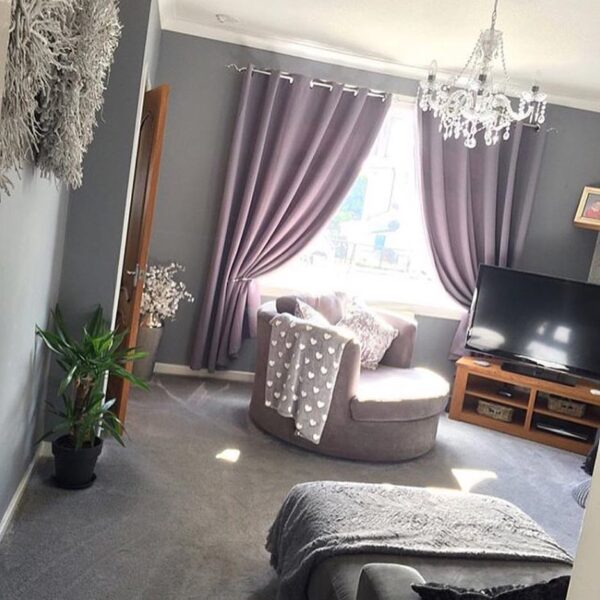Your home is your safe haven. It’s the place you come to relax, unwind, and be yourself. But sometimes, even the most perfect homes need a little updating.
Whether you’re looking to add value to your home before selling or you just want to make some much-needed improvements, embarking on a home renovation can be an exciting but daunting task.
To help you through the process, we’ve put together this handy 20-step guide. From planning and budgeting to execution and beyond, we’ll walk you through everything you need to know to make your home renovation dreams a reality. So what are you waiting for? Let’s get started!
1. Assess Your Needs
The first step to any home renovation is assessing your needs. What exactly are you hoping to accomplish with your renovation? Are you looking to update your kitchen or bathroom? Add an extra bedroom or living space?
Knowing what you want to achieve will help you make decisions about everything from the scope of your renovation to the materials you’ll use. It will also help you create a realistic budget and timeline for your project.
2. Set a Budget
Once you know what your goals are, it’s time to start planning your budget. How much money do you have available to spend on your renovation? Keep in mind that even small renovations can end up costing more than you expect, so it’s important to have a solid financial plan in place before you get started.
To help you stay on track, create a detailed budget that includes everything from the cost of materials to labor costs and permits. Make sure to include a buffer for unexpected expenses as well.
3. Choose Your Materials
One of the most important aspects of any home renovation is choosing the right materials. Not only do you want to choose materials that fit your budget, but you also want to make sure they’re durable and easy to maintain.
For example, if you’re renovating your kitchen, you’ll need to decide what type of countertops you want. Granite or quartz countertops are a popular choice among homeowners because they’re both beautiful and durable. However, they can also be quite expensive.
If you’re on a tight budget, consider laminate or tile countertops instead. These materials are more affordable and still offer a high level of durability.
4. Find the Right Contractor
Once you’ve chosen your materials, it’s time to find a contractor to help you with your renovation. If you’re not experienced in home improvement projects, it’s important to find a reputable contractor who can help you through the process.
When interviewing potential contractors, be sure to ask for references and check out their previous work. You should also make sure that they’re licensed and insured before hiring them for your project.
5. Draw Up a Contract
Before you begin your renovation, it’s important to have a signed contract in place. This document should outline the scope of work, materials to be used, timeline for completion, and payment terms.
Having a contract in place will help ensure that both you and your contractor are on the same page and will help avoid any misunderstandings down the road.
6. Get the Required Permits
Depending on the scope of your renovation, you may need to obtain one or more permits from your local municipality. For example, if you’re planning on adding an addition to your home, you’ll need to apply for a building permit.
Other common permits include electrical, plumbing, and HVAC permits. Be sure to check with your local building department to see what permits are required for your project.
7. Start Demolition
Once you have all the necessary permits in hand, you can begin demolition. This is usually the most exciting part of any home renovation as it’s when you really start to see the progress being made.
However, it’s also important to stay safe during demolition. Be sure to wear protective gear, such as gloves and goggles, and take care not to damage any existing structural elements.
8. Install framing and drywall
After demolition is complete, the next step is to install framing and drywall. This is typically done by the contractor, but if you’re experienced in carpentry, you may be able to do it yourself.
Framing is responsible for the structure of your walls, while drywall provides a smooth surface that can be painted or plastered. So, it’s important to make sure that both are installed correctly.
9. Hang Doors and Windows
Once the framing and drywall are in place, it’s time to install doors and windows. This is usually a fairly simple process, but it’s important to make sure that they’re properly sealed to avoid any air leaks.
Your choices range from wood to fiberglass to steel. The difference is that steel windows and doors offer much higher security. They are also weatherproof and will not warp due to extreme changes in temperature or moisture.
10. Install Flooring
The next step in your renovation is to install flooring. This can be anything from hardwood floors to tile or carpet. If you’re unsure of what type of flooring to choose, consult with your contractor or interior designer.
Popular choices for flooring include:
- Hardwood
- Tile
- Carpet
- Laminate
It all comes down to personal preference.
11. Paint or Stain Walls
Once the flooring is installed, it’s time to add some color to your walls. This can be done by painting or staining them. If you’re unsure of what color to choose, again, consult with your contractor or interior designer.
The best way to achieve a professional paint job is to hire a painter. But if you’re feeling ambitious, you can always try painting the walls yourself.
12. Install Cabinets and Countertops
The next step in your kitchen renovation is to install cabinets and countertops. This is usually a straightforward process, but be sure to measure twice and cut once to avoid any mistakes.
If you’re installing new cabinets, you may also need to install new hardware, such as cabinet pulls or knobs. Just remember to choose something that compliments the style of your kitchen.
13. Add Lighting Fixtures
Lighting can make a big difference in the overall look and feel of your home. Be sure to add both task and ambient lighting fixtures throughout your house.
The purpose of task lighting is to provide light for specific activities, such as cooking or reading. Ambient lighting, on the other hand, is used to create a general sense of light in a room.
14. Install Plumbing Fixtures
After the cabinets and countertops are in place, it’s time to install plumbing fixtures. This includes toilets, sinks, showers, and tubs. Be sure to follow the manufacturer’s instructions carefully to avoid any leaks.
The most important thing to remember during your home renovation is to take your time and do things right the first time. By following these simple steps, you can avoid any costly mistakes and end up with a beautiful home that you’ll love for years to come.
15. Hang Window Coverings
Once all the major components of your renovation are complete, it’s time to add some finishing touches. One of these is to hang window coverings. This can be anything from blinds to curtains or drapes.
The most popular choices for window coverings are blinds and shades. But if you want something a little more elegant, you can always opt for curtains or drapes.
16. Add Furniture and Décor
The final step in your home renovation is to add furniture and décor. This is where you’ll really get to personalize your space and make it your own. From choosing the right furniture to picking out wall art, take your time to make sure everything is just perfect.
Rugs and throw pillows are also great ways to add a little bit of color and comfort to your home. And don’t forget about plants! A few green plants can really liven up any room.
17. Get your insurance updated
After your renovation is complete, be sure to update your home insurance policy. This will ensure that your newly renovated home is properly protected in case of any unforeseen events.
Reach out to the Hunter Broking Group for all your insurance needs. They will be able to tailor a policy specifically for your new home.
18. Maintain Your Home
Once your home renovation is complete, it’s important to maintain it properly. This includes regular cleaning and upkeep. Be sure to follow the manufacturer’s instructions for all your new fixtures and appliances.
The benefits of a well-maintained home go beyond just appearances. Maintaining your home can also help to increase its value and prolong its lifespan.
19. Call a Professional When Needed
Even if you’re experienced in home renovations, there are some tasks that are best left to the professionals. If you’re ever unsure of how to proceed with a task, be sure to call a contractor or other home improvement professional.
20. Have Fun!
Renovating your home can be a daunting task, but it’s also a lot of fun. Be sure to enjoy the process and make the most of your new space.
In Conclusion
Renovating your home can be a big undertaking, but it’s also a lot of fun. Be sure to follow these 20 steps to ensure a successful renovation. And don’t forget to have fun!
Image Credits: Abbilyn Zavgorodniaia




Like this article? Share with your friends!